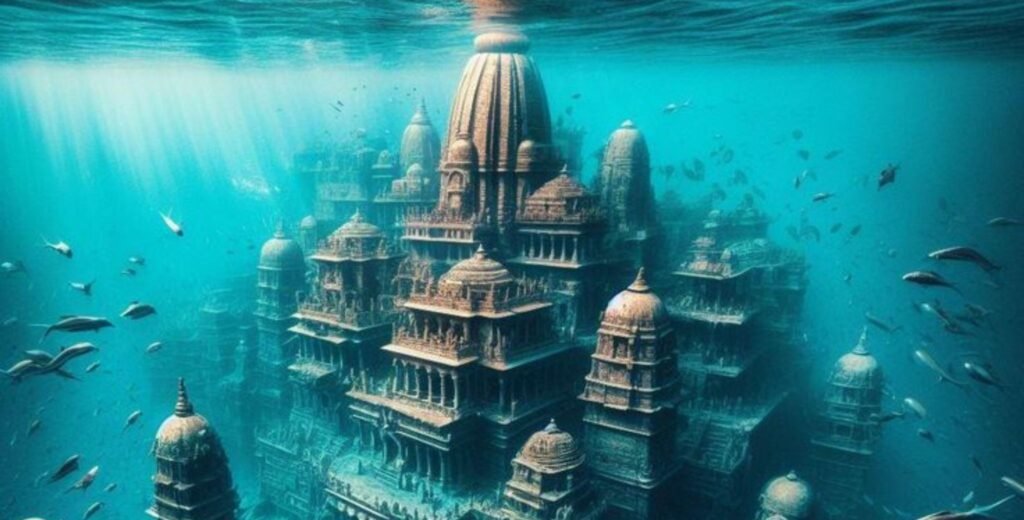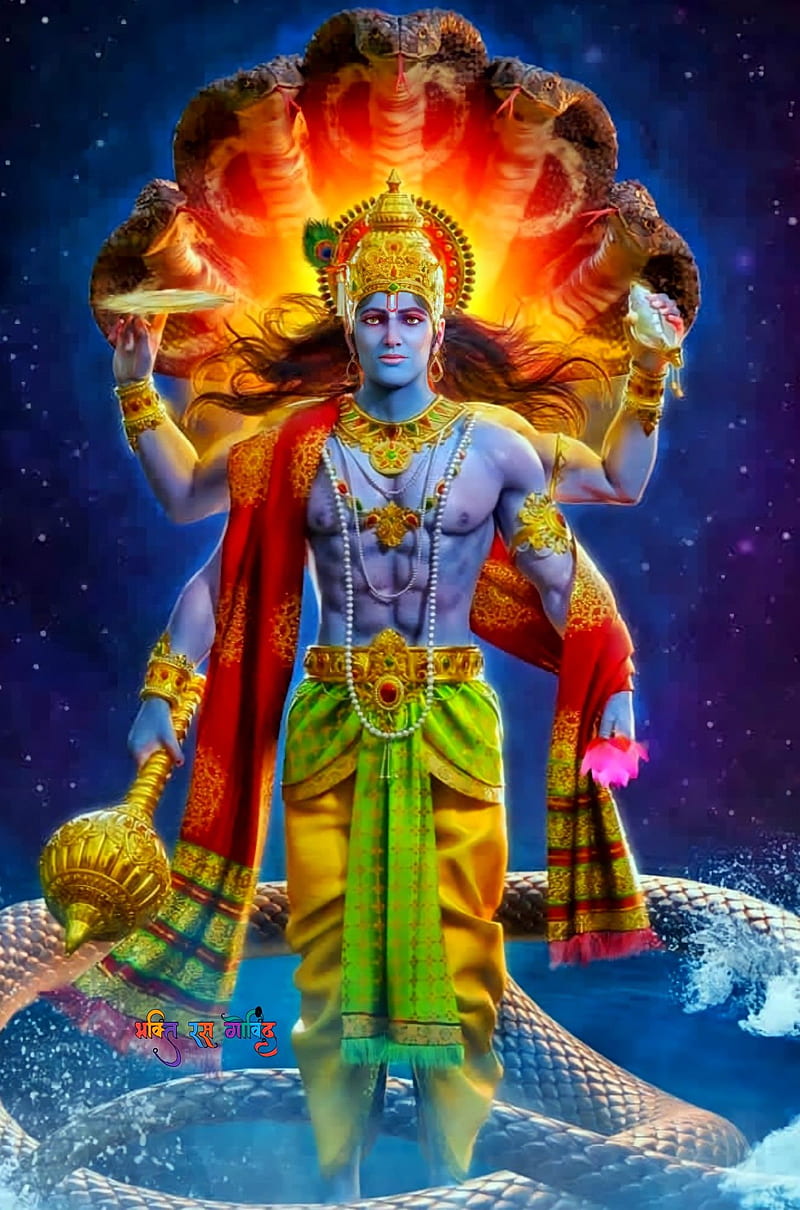
Introduction:
This story, “The Legend of Vishnu and the Lost Kingdom,” originates from the rich tapestry of Hindu mythology, a collection of ancient narratives passed down through generations in the Indian subcontinent. It is a traditional story, spun from the imagination and experiences of people who lived long ago, seeking to understand the world around them and their place within it. This narrative, like many others from this tradition, offers insights into the values, beliefs, and anxieties of a bygone era. It is crucial to remember that this is a story, a cultural artifact, and not a statement of fact or a call to worship.
Origins and Cultural Background:
The cultural era in which myths like this flourished was one steeped in agrarian life, where the rhythms of nature dictated daily existence. Ancient Indian society was organized around complex social hierarchies and spiritual beliefs. The world was seen as a dynamic interplay of divine forces, with gods and goddesses actively intervening in human affairs. Natural phenomena like monsoons, droughts, and earthquakes were attributed to these divine interventions, shaping the worldview of the people. Knowledge was primarily oral, passed down through storytelling, rituals, and the teachings of learned individuals. These narratives served not only as entertainment but also as a means of transmitting moral codes, social norms, and practical wisdom. The concept of dharma, or righteous conduct, was central, influencing every aspect of life. The cyclical nature of time, with periods of creation, preservation, and destruction, was also a fundamental belief, reflected in many of these myths.
Character Description: Vishnu
Vishnu, in Hindu mythology, is one of the principal deities, often considered the preserver of the universe. He is typically depicted as a serene figure, with blue skin, representing the vastness of the cosmos. He is often seen reclining on the serpent Shesha, symbolizing the primal waters of creation, or standing with his four arms, each holding symbolic objects: a conch shell (representing the sound of creation), a chakra (a discus symbolizing the wheel of time), a lotus flower (representing purity and spiritual liberation), and a mace (representing power and knowledge). These attributes are not meant to be taken literally but rather as symbolic representations of Vishnu’s role in maintaining cosmic order. The blue skin suggests the infinite, the lotus suggests potential and beauty, and the chakra reminds us of the constant cycle of life. He is not meant to be seen as a god to worship, but as a character that embodies the principles of preservation, righteousness, and balance within the narrative.
Main Story / Narrative Retelling:
Long ago, nestled between the towering peaks of the Himalayas and the vast, shimmering ocean, lay the kingdom of Swarna. It was a land of unparalleled beauty and prosperity, ruled by the wise and just King Aditya. The people of Swarna lived in harmony, their lives blessed by abundance and peace. But their idyllic existence was threatened by a terrible curse, born of arrogance and disregard for the natural world. King Aditya, in his pride, had desecrated a sacred grove, angering the spirits of the forest.
The consequences were swift and devastating. A dark cloud descended upon Swarna, blotting out the sun. The rivers dried up, the fields turned barren, and a terrible plague swept through the kingdom. The once vibrant city became a ghost town, its inhabitants weakened and despairing. King Aditya, consumed by guilt and remorse, sought guidance from the kingdom’s wise elders. They revealed that the only way to lift the curse was to appease the angered spirits and restore balance to the land. This required a sacrifice of immense value: the kingdom’s most prized possession, a celestial gem known as the Surya Mani, which held the light of the sun within it.

Desperate, King Aditya embarked on a perilous journey to the heart of the Himalayas, seeking the intervention of Vishnu, the preserver. After many days of arduous travel, he reached a secluded hermitage, where a sage directed him to a hidden cave. Within the cave, King Aditya meditated for days, praying for Vishnu’s grace. Finally, Vishnu appeared before him, not in his divine form, but as a humble mendicant. He listened patiently to the king’s tale of woe and then instructed him to cast the Surya Mani into the deepest part of the ocean.
King Aditya, though heartbroken at the thought of losing the gem, obeyed Vishnu’s command. He traveled to the coast and, with trembling hands, cast the Surya Mani into the waves. As the gem sank beneath the surface, a blinding light erupted from the ocean. The dark clouds that had enveloped Swarna began to dissipate, and the rivers slowly began to flow again. The land began to heal, and the people started to recover from the plague.
But the kingdom of Swarna was never the same. The ocean, in its newfound power, claimed the land as its own, swallowing the once-thriving city and transforming it into an underwater kingdom, forever lost to the world above. Vishnu, in his guise as the mendicant, revealed himself to King Aditya and explained that the loss of Swarna was a necessary consequence of his actions. It was a reminder that even the most prosperous kingdom could fall prey to arrogance and that true wealth lay not in material possessions but in respecting the balance of nature.
Symbolism and Meaning:
The story of Vishnu and the Lost Kingdom is rich in symbolism. The kingdom of Swarna represents a state of harmony and prosperity, which is disrupted by the king’s arrogance. The Surya Mani symbolizes the source of life and light, representing the kingdom’s most valuable asset. The act of casting it into the ocean signifies the sacrifice required to restore balance. Vishnu’s appearance as a mendicant highlights the importance of humility and the idea that divine intervention often comes in unexpected forms. The loss of the kingdom serves as a cautionary tale, warning against the dangers of unchecked pride and the importance of respecting the environment. The story likely served as a reminder to the people of that time to live in accordance with dharma, emphasizing the consequences of hubris and the need for atonement. The flood itself might have been a metaphorical representation of consequences for straying from moral and societal norms.
Modern Perspective:
Today, the legend of Vishnu and the Lost Kingdom continues to resonate in various forms of media. It serves as inspiration for fantasy novels, video games, and animated films, often adapted to explore themes of environmentalism, social justice, and the consequences of unchecked power. The story’s motifs of lost civilizations, divine intervention, and the struggle for redemption are universally appealing and lend themselves to creative reinterpretation. In cultural studies, the myth is analyzed for its insights into ancient Indian society, its values, and its understanding of the relationship between humans and the natural world. The character of Vishnu, while not worshipped, remains a culturally significant figure, representing the enduring power of ancient narratives.
Conclusion:
“The Legend of Vishnu and the Lost Kingdom” is a fascinating example of a cultural story, a product of human imagination and a reflection of the values and beliefs of a bygone era. It is important to remember that this is a story, not a divine truth. As Muslims, we recognize that only Allah is the true Creator and Sustainer of the universe. This narrative, however, provides valuable insights into the cultural heritage, storytelling traditions, and the human desire to understand the world around us. It reminds us of the power of imagination, the importance of respecting our environment, and the enduring appeal of ancient tales. This story serves as an artifact of human creativity, not as a call to faith or worship.





